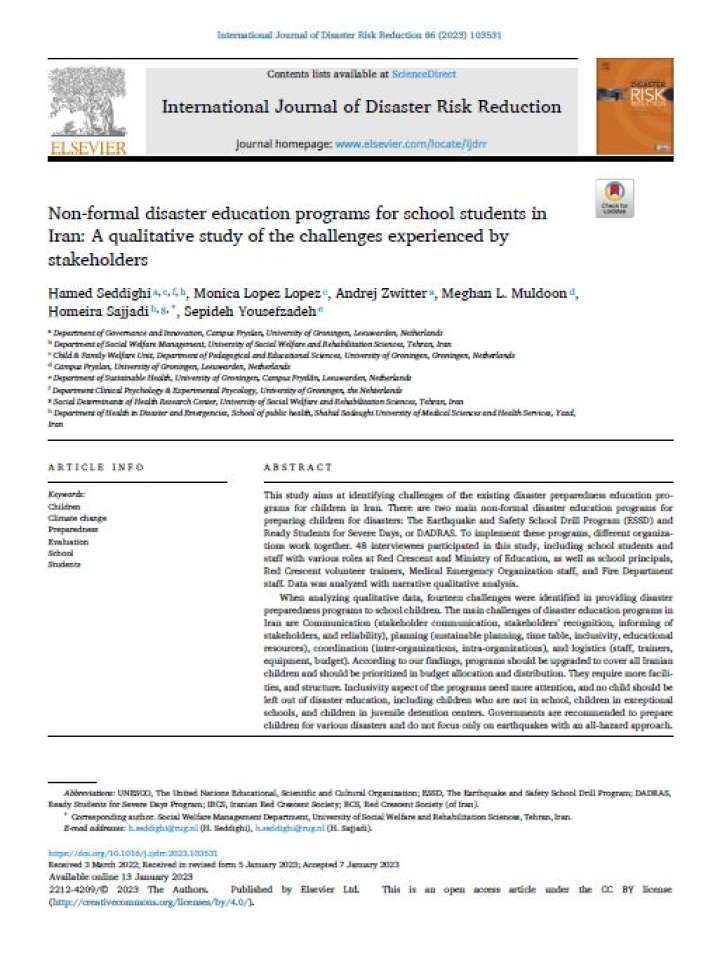Non-formal disaster education programs for school students in Iran: A qualitative study of the challenges experienced by stakeholders
This study aims at identifying challenges of the existing disaster preparedness education programs for children in Iran. There are two main non-formal disaster education programs for preparing children for disasters: The Earthquake and Safety School Drill Program (ESSD) and Ready Students for Severe Days, or DADRAS. To implement these programs, different organizations work together. 48 interviewees participated in this study, including school students and staff with various roles at Red Crescent and Ministry of Education, as well as school principals, Red Crescent volunteer trainers, Medical Emergency Organization staff, and Fire Department staff.
The main challenges of disaster education programs in Iran are Communication (stakeholder communication, stakeholders' recognition, informing of stakeholders, and reliability), planning (sustainable planning, time table, inclusivity, educational resources), coordination (inter-organizations, intra-organizations), and logistics (staff, trainers, equipment, budget). According to our findings, programs should be upgraded to cover all Iranian children and should be prioritized in budget allocation and distribution.
Explore further
